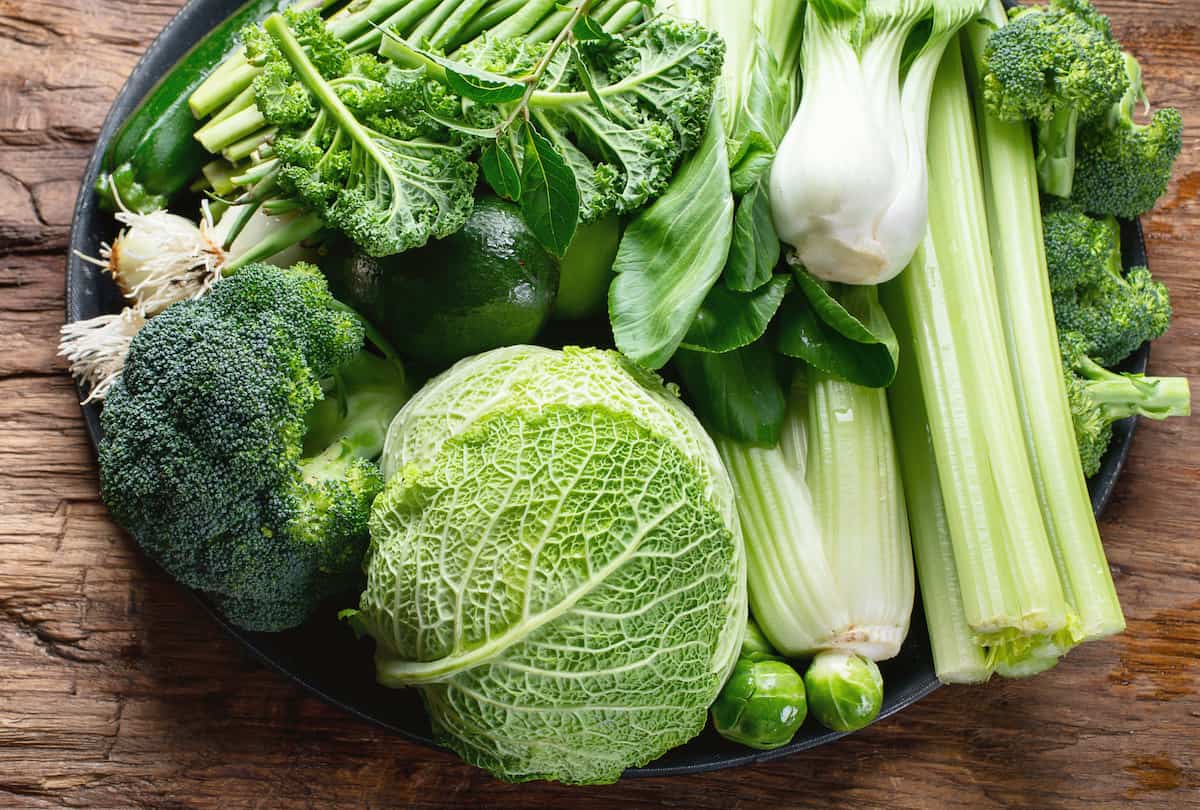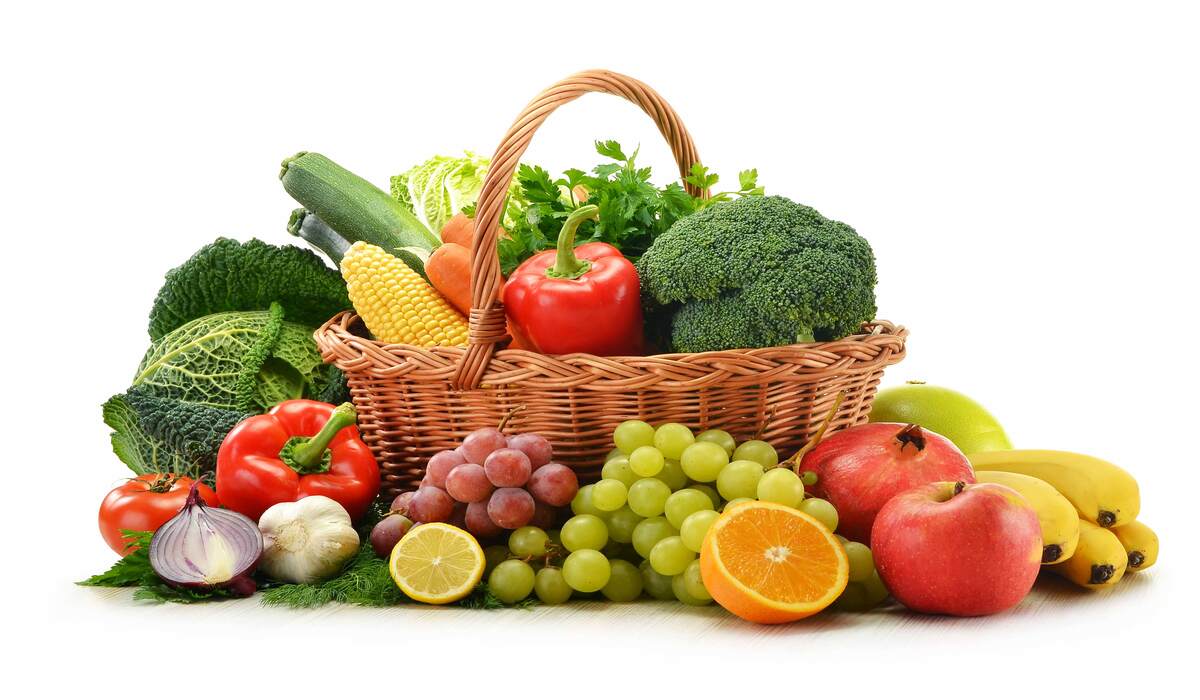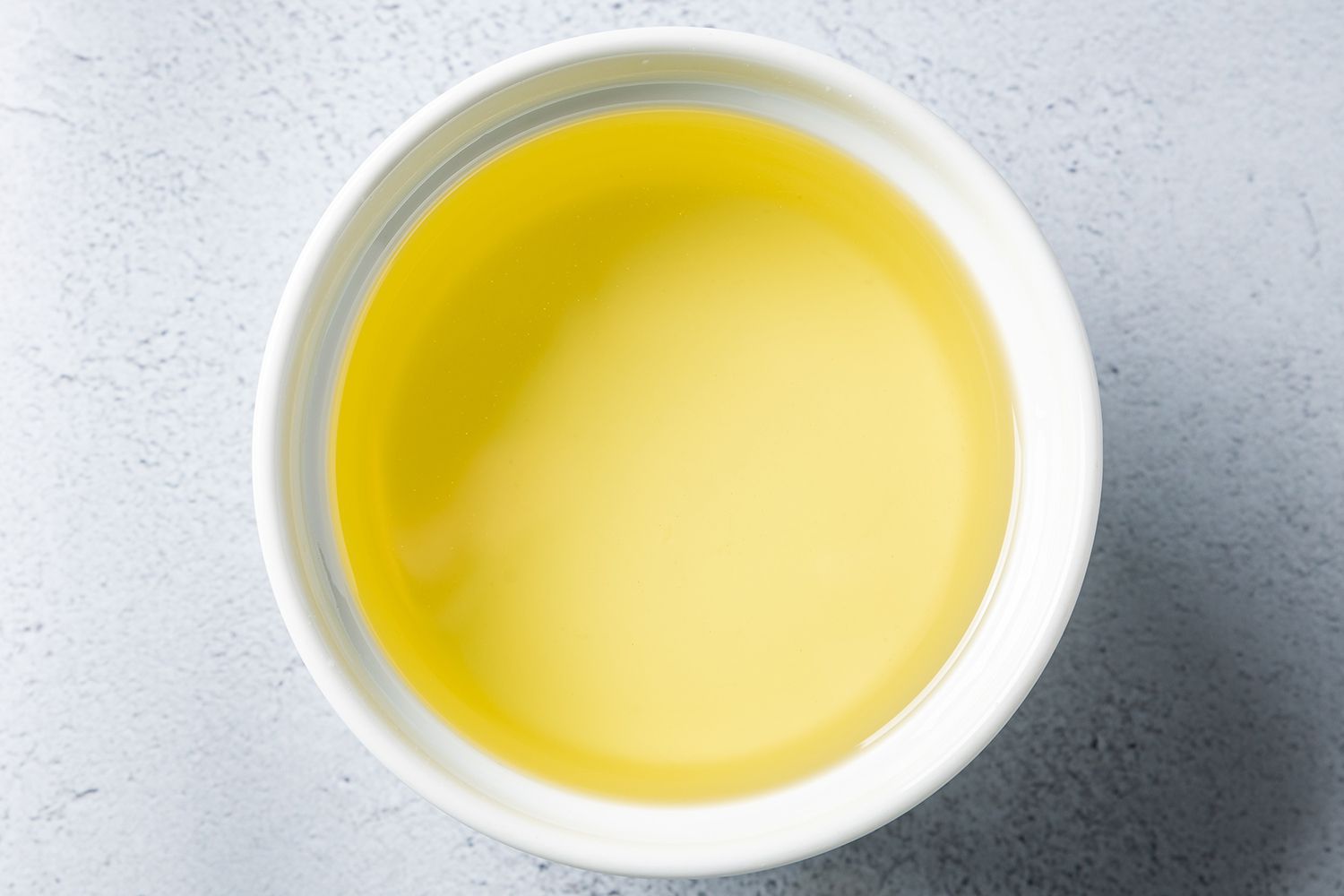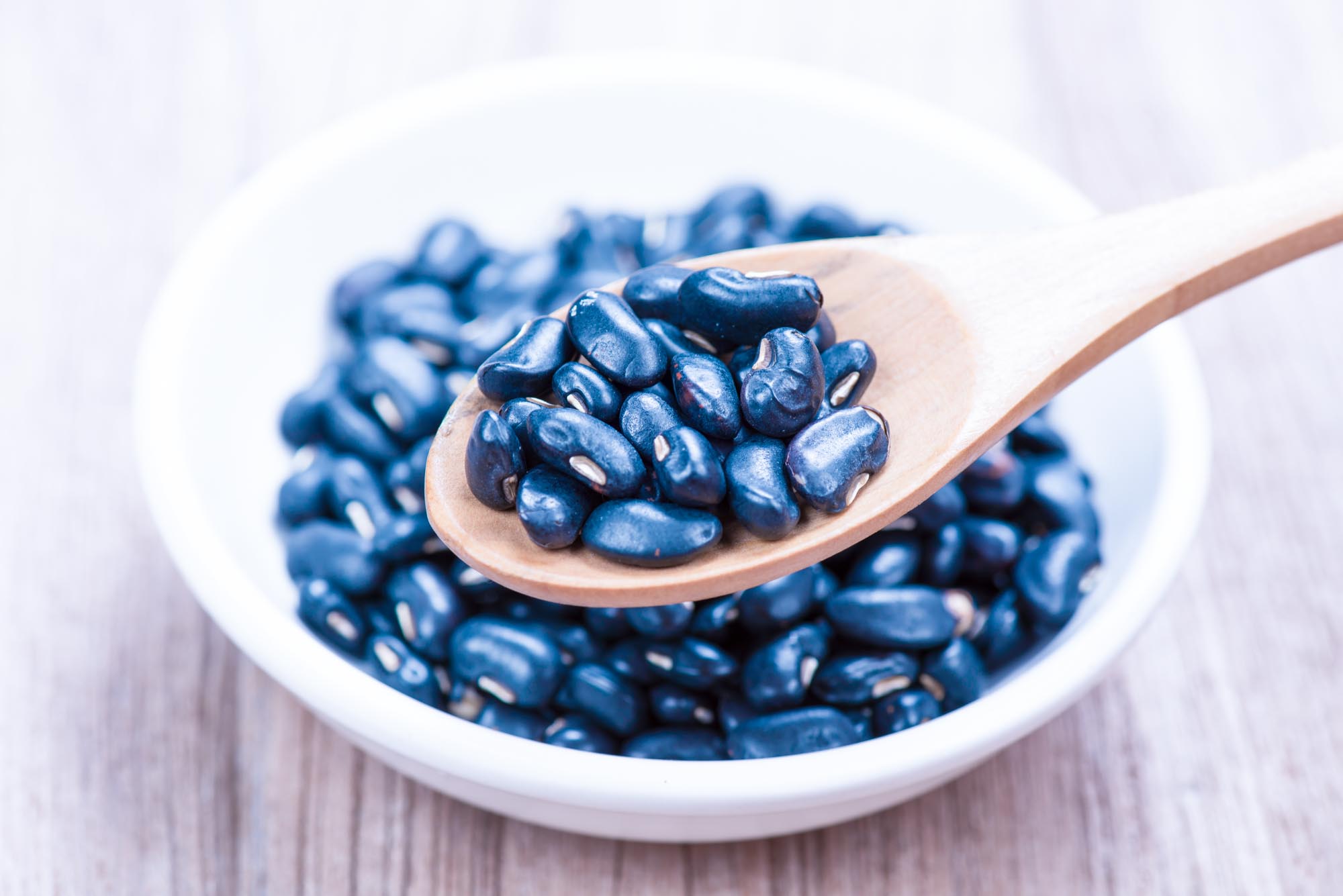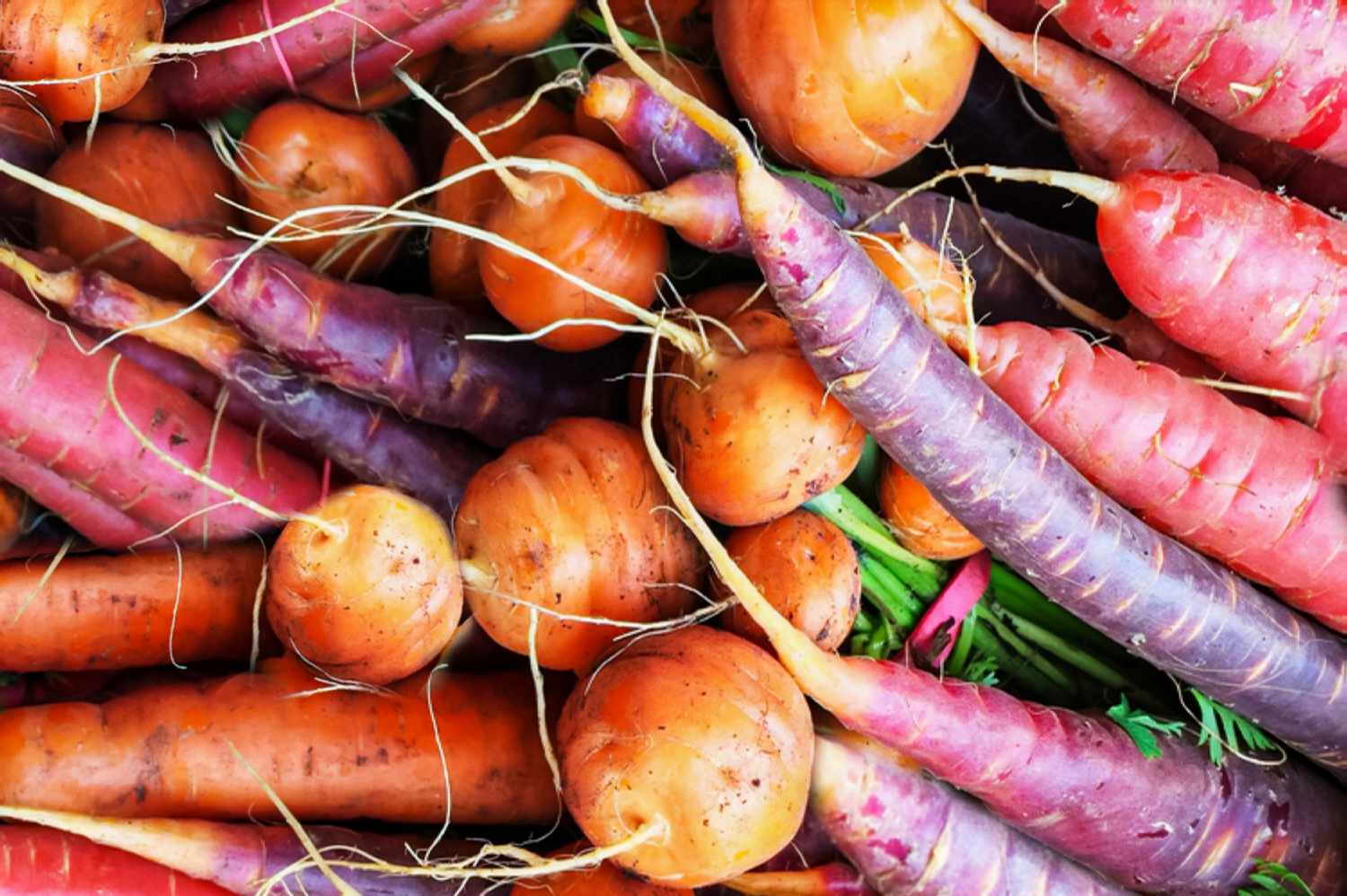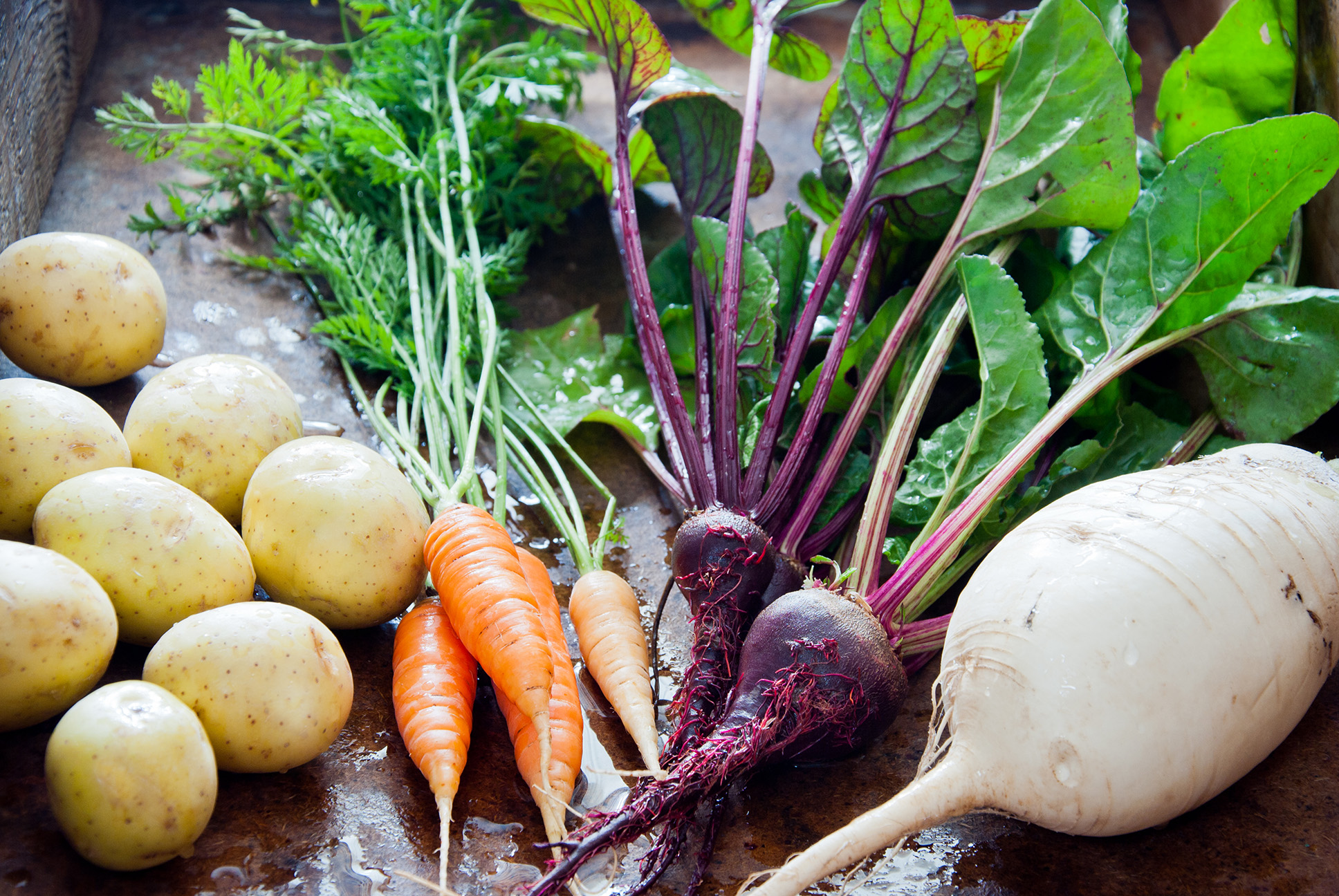Home>Gardening News and Trends>Latest News>What Vegetables Are In Lo Mein
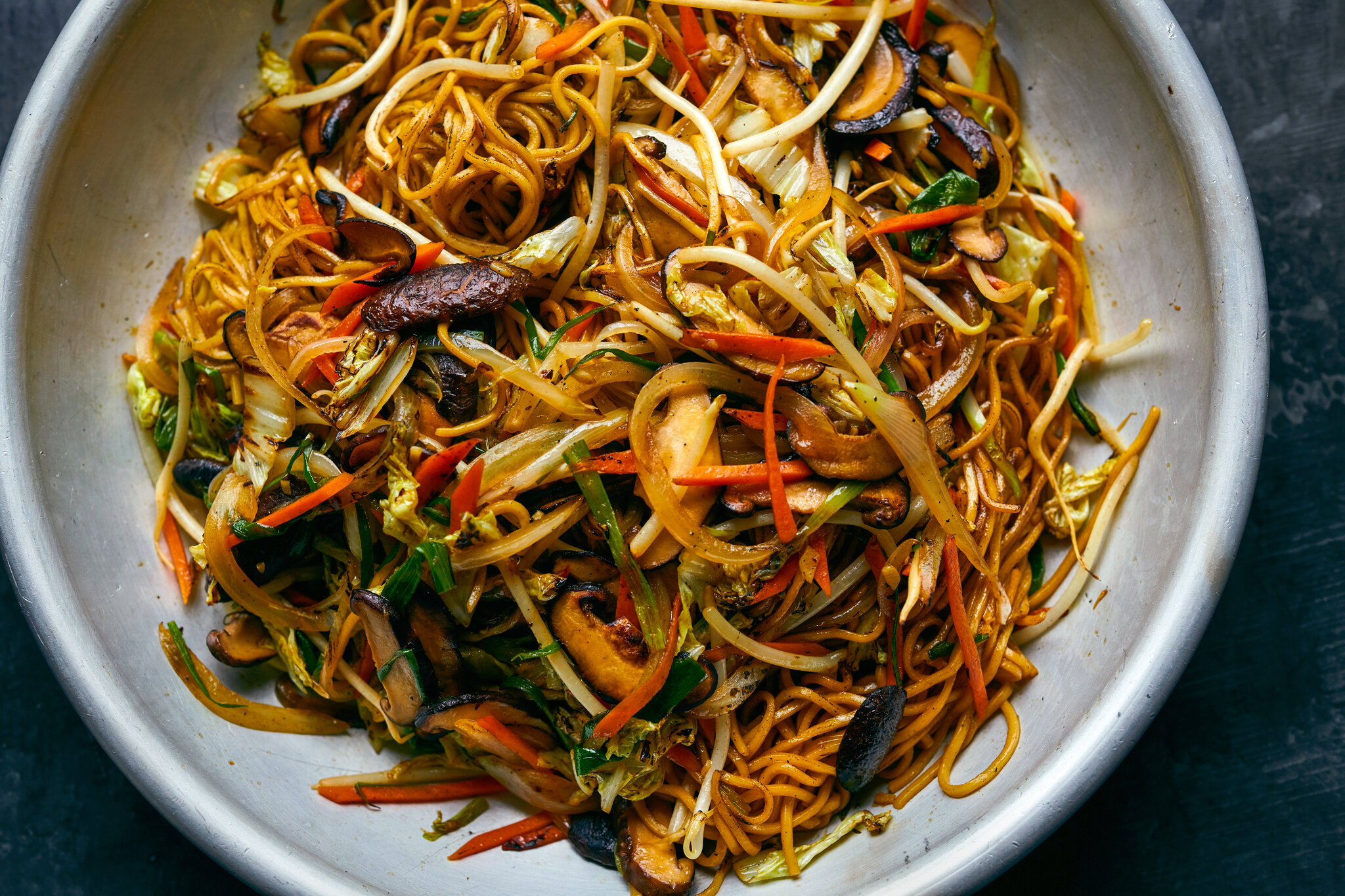

Latest News
What Vegetables Are In Lo Mein
Published: October 8, 2023
(Many of the links in this article redirect to a specific reviewed product. Your purchase of these products through affiliate links helps to generate commission for Chicagolandgardening.com, at no extra cost. Learn more)
Table of Contents
Introduction
Lo Mein is a beloved dish in Chinese cuisine that has gained popularity around the world. It is a flavorful stir-fried noodle dish that is both satisfying and versatile. With its combination of noodles and a variety of ingredients, lo mein offers a delightful mix of textures and flavors that make it a favorite among food enthusiasts.
Originating from Chinese cuisine, lo mein has become a staple in many Asian restaurants worldwide. The dish typically consists of wheat noodles that are cooked to perfection, then stir-fried with a delicious array of vegetables, proteins, and sauces. The result is a mouthwatering dish that can be enjoyed on its own or paired with other Chinese dishes.
Lo mein is known for its flexibility in terms of ingredients, allowing for endless customization. However, there are certain vegetables that are commonly used to enhance the flavors and textures of this iconic dish. In this article, we will explore the most common vegetables found in lo mein and how they contribute to its overall deliciousness.
Whether you’re a fan of traditional Chinese cuisine or looking to experiment with international flavors, understanding the vegetables used in lo mein is essential. From the crunch of celery to the vibrant colors of bell peppers, these vegetables add depth and vibrancy to the dish, making each bite a delightful experience.
So, let’s dive into the world of lo mein and discover the vegetables that make it a truly exceptional dish!
Lo Mein: A Popular Chinese Dish
Lo mein is a quintessential Chinese dish that has gained widespread popularity both within China and abroad. It is a versatile and flavorful noodle dish that has become a staple in Chinese cuisine.
Lo mein, which translates to “tossed noodles” in Cantonese, is believed to have originated in the Guangdong province of China. It is commonly made with wheat flour noodles that are boiled until tender, then stir-fried with a combination of vegetables, protein, and savory sauces, resulting in a delectable and satisfying meal.
One of the reasons behind the popularity of lo mein lies in its simplicity and adaptability. The dish can be customized to suit different dietary preferences and palates. It can be made with various combinations of vegetables, such as carrots, snow peas, and bell peppers, as well as proteins like chicken, beef, or shrimp.
Lo mein is also known for its incredible flavor profile. The noodles soak up the rich sauces and spices used in the stir-fry, ensuring that each bite is bursting with savory goodness. The combination of textures – from the soft and chewy noodles to the crispness of the vegetables – makes every mouthful a delightful experience.
Furthermore, lo mein is a versatile dish that can be enjoyed on its own or paired with other Chinese dishes. It serves as a satisfying main course and can be enjoyed by both vegetarians and meat lovers alike. Its popularity has grown globally, and it can now be found in Chinese restaurants around the world.
Whether you’re looking to explore the depths of Chinese cuisine or simply craving a comforting and flavorful meal, lo mein is a fantastic option. Its widespread popularity is a testament to its deliciousness and adaptability, making it an enduring favorite among food enthusiasts.
Ingredients Used in Lo Mein
Lo mein is a versatile dish that allows for a wide range of ingredients to be incorporated, making it a flexible and customizable choice for Chinese cuisine lovers. While the specific ingredients used can vary depending on personal preferences and regional variations, there are several key components that are commonly found in lo mein dishes.
The foundation of any lo mein dish is the noodles themselves. Traditional lo mein is made using wheat flour noodles, which are boiled until al dente and then stir-fried to perfection. These noodles provide a soft and chewy texture that complements the other ingredients in the dish.
Next, the vegetables play a crucial role in adding flavor, texture, and visual appeal to lo mein. Carrots, for example, are often thinly sliced or julienned and lend a subtle sweetness to the dish. Green bell peppers add a refreshing crunch, while snow peas provide a crisp and vibrant addition. Bok choy, with its leafy greens and tender stems, adds a nutrient-packed element to the dish.
Bean sprouts, another popular ingredient in lo mein, contribute a delicate crunch and a fresh, earthy flavor. Along with mushrooms, they provide a rich umami taste, elevating the overall taste of the dish. Lastly, onions are often added for their aromatic properties, bringing a hint of sweetness and depth of flavor to the noodles.
When it comes to protein, there are various options to choose from depending on personal preferences. Common choices include chicken, beef, shrimp, or tofu. These proteins are typically thinly sliced or cubed and stir-fried until tender and succulent, adding a substantial element to the dish.
In addition to the vegetables and protein, the sauce is a key component in enhancing the flavors of lo mein. A combination of soy sauce, oyster sauce, sesame oil, and other seasonings is commonly used to create a savory and delicious coating for the noodles and ingredients.
Overall, the ingredients used in lo mein contribute to its satisfying texture, vibrant colors, and irresistible flavors. The combination of noodles, vegetables, protein, and sauce creates a harmonious balance that is both comforting and delicious. Whether you prefer a vegetarian version or enjoy the addition of meat or seafood, lo mein offers a delightful culinary experience for everyone.
Common Vegetables in Lo Mein
Lo mein is a versatile dish that offers a plethora of vegetable options to enhance its flavors and textures. While there is room for creativity and personal preference in choosing vegetables for lo mein, certain vegetables have become staples due to their complementary tastes and appealing appearance.
One common vegetable found in lo mein is celery. Its crisp texture and subtle flavor make it a popular choice. Celery adds a refreshing crunch to the dish, creating a delightful contrast to the soft noodles and other ingredients. Thinly sliced or chopped celery blends seamlessly with the other flavors, contributing a subtle yet distinct taste.
Carrots are another frequent addition to lo mein. They are often julienned or thinly sliced into matchstick-like pieces. Carrots not only add vibrant color to the dish but also lend a subtle natural sweetness. Their slightly crunchy texture complements the soft noodles, creating an enjoyable bite with each mouthful of lo mein.
Green bell peppers are often included in lo mein recipes for their crispness and refreshing flavor. The bright green color of bell peppers adds visual appeal to the dish, while the crunchy texture provides a satisfying bite. The subtly tangy taste of green bell peppers enhances the overall flavor profile of lo mein.
Snow peas are a popular vegetable choice for adding a pop of color and texture to lo mein. These tender, bright green pods offer a distinct crunch and a slightly sweet taste. Snow peas retain their vibrant color even after being cooked, making them visually pleasing and adding visual interest to the dish.
Bok choy, often referred to as Chinese cabbage, is a leafy green vegetable that is commonly used in lo mein. Its mild, slightly bitter flavor and tender stems make it a versatile choice. Bok choy adds a fresh and nutritious element to the dish, packed with vitamins and minerals.
Bean sprouts are another commonly used vegetable in lo mein. These crunchy sprouts bring a refreshing and earthy taste to the dish. They provide a unique texture and a subtle nutty flavor that complements the other ingredients, adding depth and complexity to the overall dish.
Mushrooms, such as shiitake or button mushrooms, are often included in lo mein to introduce a rich umami flavor. Mushrooms add a savory taste and a meaty texture to the dish, making it satisfying for both vegetarians and meat lovers. They also absorb the flavors of the sauce, enhancing the overall taste experience.
Finally, onions are frequently used in lo mein to impart a hint of sweetness and depth of flavor. They add a distinct aroma and blend harmoniously with other ingredients, enhancing the overall taste profile of the dish.
These common vegetables create a harmonious balance of flavors, textures, and colors in lo mein. Their inclusion adds freshness, nutritional value, and visual appeal to the dish, elevating it to a satisfying and enjoyable experience.
Celery
Celery is a common vegetable used in many culinary dishes, including lo mein. It adds a delightful crunch, subtle flavor, and a touch of freshness to this popular Chinese noodle dish. With its vibrant green color and unique texture, celery brings both visual appeal and a satisfying bite to lo mein.
When it comes to cooking celery for lo mein, it is often thinly sliced or chopped into small pieces. This allows the celery to blend seamlessly with the other ingredients and ensures that it cooks evenly. The crisp texture of celery remains intact even after being stir-fried, adding a satisfying crunch to each mouthful.
Beyond its textural contribution, celery also offers a subtle flavor to the dish. It has a mild and slightly earthy taste that complements the savory elements of lo mein. The delicate flavor of celery adds depth without overpowering the other ingredients, creating a well-balanced and enjoyable eating experience.
In terms of nutritional value, celery is a fantastic addition to lo mein. It is low in calories but high in dietary fiber, making it a filling and nutritious vegetable choice. Celery is also packed with vitamins such as vitamin C, K, and A, as well as minerals like potassium and folate. Including celery in your lo mein not only enhances the taste but also boosts the dish’s nutritional content.
Moreover, celery offers a refreshing and hydrating element to lo mein. Its high water content helps to keep the dish moist and prevents it from becoming dry. This not only adds to the overall enjoyment of the dish but also enhances its texture and mouthfeel.
With its versatility and ability to blend seamlessly with other ingredients, celery has become a staple vegetable in lo mein. Whether you enjoy the traditional recipe or prefer to experiment with different flavors and variations, celery adds a delightful element to this classic Chinese dish.
So, next time you indulge in a plate of delectable lo mein, savor the delightful crunch and subtle flavor that celery brings. Its vibrant green color, refreshing taste, and nutritional benefits make it a perfect complement to the array of ingredients in this popular Chinese noodle dish.
Carrots
Carrots are a colorful and flavorful addition to many culinary dishes, including the popular Chinese dish, lo mein. Known for their vibrant orange hue and natural sweetness, carrots bring both visual appeal and a touch of sweetness to this beloved noodle dish.
When preparing carrots for lo mein, they are commonly julienned or thinly sliced into matchstick-like pieces. This allows the carrots to cook quickly and ensures that they retain a slight crunch, adding texture to the dish. Their vibrant color adds visual interest, making the lo mein visually appealing and appetizing.
One of the standout qualities of carrots is their natural sweetness. When cooked, their slight sweetness adds depth and balance to the savory flavors of lo mein. Carrots provide a subtle yet distinct taste that complements the other ingredients without overpowering them. This subtle sweetness enhances the overall flavor profile of lo mein, creating a harmonious blend of tastes.
In addition to their flavor contribution, carrots bring nutritional benefits to lo mein. They are low in calories but high in vitamins and minerals. Carrots are an excellent source of vitamins A, K, and C, as well as dietary fiber. This makes them a nutrient-dense addition to the dish, promoting overall health and adding nutritional value to your meal.
Furthermore, the texture of carrots provides a satisfying crunch to the dish. Their crispness contrasts with the soft noodles and adds a delightful bite to each mouthful. This textural contrast elevates the eating experience, making each bite of lo mein enjoyable and satisfying.
Beyond their culinary qualities, carrots are also known for their health benefits. They are rich in antioxidants and are said to promote healthy vision, improve digestion, and support immunity. By including carrots in your lo mein, you not only enhance the taste and texture but also add a wholesome component to the dish.
Whether you’re a fan of the classic lo mein recipe or enjoy experimenting with different flavors, carrots are a versatile and delicious vegetable to include. Their vibrant color, natural sweetness, and nutritional benefits make them a fantastic choice for enhancing the overall appeal and flavor of this beloved Chinese noodle dish.
So, next time you find yourself savoring a plate of mouthwatering lo mein, relish the delightful addition of carrots. Their crunchiness, subtle sweetness, and nutritional value contribute to the overall enjoyment and satisfaction offered by this beloved Chinese culinary masterpiece.
Green Bell Peppers
Green bell peppers are a vibrant and versatile vegetable that adds a refreshing crunch and a burst of flavor to lo mein, the popular Chinese noodle dish. With their bright green color and tangy taste, green bell peppers provide both visual appeal and a delightful kick to this beloved culinary creation.
When preparing green bell peppers for lo mein, they are typically sliced into thin strips or bite-sized pieces. This allows them to cook quickly and evenly while preserving their crisp texture. The vibrant green color of the peppers adds visual interest and complements the other ingredients in the dish.
One of the defining features of green bell peppers is their distinct tangy flavor. They offer a mildly sweet taste with a subtle hint of bitterness, adding a refreshing note to the lo mein. The tangy flavor of green bell peppers balances the richness of the sauce and enhances the overall taste experience.
Aside from their flavor contribution, green bell peppers are a nutritional powerhouse. They are low in calories but rich in essential vitamins and minerals. Green bell peppers are an excellent source of vitamin C, vitamin A, and dietary fiber. Including them in your lo mein adds nutritional value to the dish, promoting overall health and well-being.
In terms of texture, green bell peppers provide a satisfying crunch to the dish. Their crispness adds a delightful contrast to the soft noodles and tender proteins. This textural element enhances the overall eating experience, making each bite of lo mein a delightful combination of flavors and textures.
Furthermore, green bell peppers are versatile in their usage. They can be enjoyed raw in salads or cooked in various dishes, including stir-fries like lo mein. Their vibrant color, distinctive flavor, and satisfying crunch make them a fantastic choice for adding depth and visual appeal to the dish.
Lastly, green bell peppers are known for their health benefits. They are packed with antioxidants and are believed to have anti-inflammatory properties. Green bell peppers are also rich in water content, aiding in hydration and promoting good digestion.
When you indulge in a plate of lo mein, take pleasure in the delightful addition of green bell peppers. Their bright color, tangy flavor, and nutritional value lend vibrancy and depth to the dish. Green bell peppers are a versatile and delicious vegetable that elevates the overall taste and aesthetics of this beloved Chinese noodle dish.
Snow Peas
Snow peas are a delightful addition to lo mein, the popular Chinese noodle dish renowned for its vibrant flavors and textures. With their crispness, vibrant color, and sweet taste, snow peas bring a refreshing element to the dish and contribute to its overall appeal.
When it comes to preparing snow peas for lo mein, they are typically left whole or trimmed and cut in half diagonally. This allows them to retain their shape and texture while also ensuring even cooking. The bright green color of the snow peas adds visual interest to the dish, making it visually appealing and appetizing.
One of the standout features of snow peas is their delightful crunch. Unlike other peas, snow peas have a tender pod that can be eaten entirely. This unique texture provides a satisfying bite and a contrasting mouthfeel, especially when paired with the soft noodles and other ingredients in lo mein. The crispness of snow peas adds a refreshing element to each mouthful, enhancing the overall eating experience.
In terms of flavor, snow peas offer a delicate sweetness that complements the savory elements of lo mein. They have a subtly sweet taste with a hint of grassiness, which pairs well with the other ingredients in the dish. This mild natural sweetness adds depth and balance to the overall flavor profile of the lo mein, creating a well-rounded and enjoyable taste experience.
Moreover, snow peas bring nutritional benefits to the table. They are low in calories but packed with essential vitamins and minerals. Snow peas are a great source of vitamin C, vitamin K, and dietary fiber. Including them in your lo mein adds a nutritious boost to the dish, supporting overall health and well-being.
Additionally, snow peas are known for their vibrant green color, which indicates high levels of chlorophyll. Chlorophyll is a powerful antioxidant that helps to detoxify the body and promote optimal health. Including snow peas in your lo mein not only adds visual appeal but also contributes to the overall nutritional content of the dish.
Overall, snow peas are a fantastic addition to lo mein. Their crispness, subtle sweetness, and nutritional value elevate the dish, making it a flavorful and satisfying Chinese culinary experience. So, the next time you indulge in a plate of delicious lo mein, relish the delightful addition of snow peas and enjoy the vibrant flavors and textures they bring to this beloved dish.
Bok Choy
Bok choy, also known as Chinese cabbage, is a leafy green vegetable that adds a nutritional and flavorful element to the beloved Chinese dish, lo mein. With its tender leaves and crisp stems, bok choy offers both visual appeal and a refreshing taste to this popular noodle dish.
In the preparation of bok choy for lo mein, the leaves are typically separated from the stems and each part is chopped into bite-sized pieces. This ensures even cooking and allows the different textures of the bok choy to shine through. The vibrant green color of the leaves adds a visual pop to the dish, while the crispness of the stems contributes to a delightful variety of textures.
One of the defining characteristics of bok choy is its mild, slightly bitter taste that upgrades the overall flavor profile of lo mein. It provides a refreshing and slightly peppery flavor that complements the other ingredients. The taste of bok choy is subtle enough not to overpower the dish, but distinctive enough to add depth and complexity to the overall culinary experience.
Beyond its flavor, bok choy is highly nutritious, making it a valuable addition to lo mein. It is a great source of vitamins A, C, and K, as well as essential minerals like calcium and potassium. Bok choy also contains antioxidants that support overall health and well-being. Including bok choy in your lo mein not only enhances the taste but also adds nutritional value to the dish.
Moreover, the texture of bok choy offers a pleasurable eating experience. The tender leaves provide a delicate, melt-in-your-mouth sensation, while the crispness of the stems adds a satisfying crunch. The combination of textures adds depth and variety to the overall dish, making each bite of lo mein an enjoyable culinary experience.
Bok choy is a versatile vegetable that can be cooked in various ways, making it a fantastic choice for incorporating into lo mein. Its ability to retain its shape and texture even when cooked at high heat ensures that it remains a vibrant component of the dish. Bok choy’s versatile nature, mild flavor, and nutrient content make it a perfect complement to the other ingredients in lo mein.
Next time you savor a plate of delectable lo mein, take delight in the addition of bok choy. Appreciate the leafy green goodness, crisp texture, and health benefits it brings to this classic Chinese dish. Bok choy truly elevates the taste, texture, and nutritional value of lo mein, making it a standout ingredient in this beloved culinary masterpiece.
Bean Sprouts
Bean sprouts are a popular and nutritious ingredient that adds a delightful crunch and earthy flavor to lo mein, the beloved Chinese noodle dish. With their crisp texture and subtle nutty taste, bean sprouts contribute both visual appeal and a delightful element of freshness to this culinary creation.
When it comes to preparing bean sprouts for lo mein, they are commonly used raw or lightly stir-fried. Their slender, pale shoots add a vibrant touch to the dish. The crunchy texture of bean sprouts provides a delightful contrast to the soft noodles and other ingredients, adding a satisfying bite to each mouthful.
One of the notable qualities of bean sprouts is their unique flavor. They have a mild, earthy taste with a hint of sweetness. This subtle nuttiness pairs well with the savory elements of lo mein, adding depth and complexity to the overall flavor profile. Bean sprouts bring a fresh, natural taste that enhances the overall taste experience.
In addition to their flavor, bean sprouts are highly nutritious. They are low in calories but rich in vitamins and minerals. Bean sprouts are an excellent source of vitamin C, vitamin K, folate, and dietary fiber. Including them in your lo mein adds a nutritional boost to the dish, promoting overall health and well-being.
Moreover, bean sprouts are known for their crispness and ability to retain their texture even when cooked. This makes them a versatile ingredient that can be enjoyed raw for a refreshing crunch or lightly stir-fried for a more tender bite. Their versatility allows for customization and experimentation in lo mein recipes.
In addition to their nutritional benefits and unique taste, bean sprouts also contribute visual appeal to lo mein. Their pale shoots add a pop of color and vibrant freshness to the dish, elevating its overall aesthetic appeal. The combination of bean sprouts with other colorful ingredients creates a visually appealing and appetizing plate of lo mein.
Whether you enjoy the delicate crunch of raw bean sprouts or prefer their tender texture when cooked, the inclusion of bean sprouts in lo mein adds a delightful element to this Chinese specialty. So, the next time you dig into a plate of deliciously seasoned lo mein, relish the textural contrast and subtle nutty flavor that bean sprouts bring to this beloved noodle dish.
Mushrooms
Mushrooms are a beloved ingredient that adds a savory and umami-rich element to lo mein, the popular Chinese noodle dish. With their meaty texture and robust flavor, mushrooms bring depth and complexity to the dish, enhancing its overall taste profile.
When it comes to using mushrooms in lo mein, the options are abundant. Popular choices include shiitake mushrooms, button mushrooms, or a combination of different mushroom varieties. These mushrooms are typically sliced or chopped, allowing them to absorb the flavors of the dish and distribute their savory essence throughout the noodles.
One of the defining qualities of mushrooms is their umami taste. They offer a deep, earthy flavor that adds richness and complexity to the overall dish. This umami taste is sought after in many culinary traditions and is particularly prominent in Chinese cuisine. With each bite of lo mein, mushrooms deliver a burst of savory goodness that enhances the overall eating experience.
In addition to their flavor, mushrooms bring a unique texture to the dish. They have a meaty and substantial bite that adds depth and contrast to the soft noodles and other ingredients. The texture of mushrooms adds a satisfying element to each mouthful of lo mein.
Furthermore, mushrooms are known for their nutritional benefits. They are low in calories but rich in essential nutrients such as vitamins B, D, and minerals like selenium and potassium. Mushrooms are also a great source of antioxidants, which support overall health and well-being. Including mushrooms in your lo mein not only enhances the taste but also adds nutritional value to the dish.
With their versatility and ability to absorb flavors, mushrooms assimilate well with the other ingredients in lo mein. They soak up the savory sauces and seasonings, intensifying the overall taste of the dish. Mushrooms add a depth of flavor that elevates the lo mein, making it a hearty and satisfying meal.
Moreover, their visual appeal cannot be overlooked. The various shapes, sizes, and colors of mushrooms bring vibrancy and visual interest to the dish. Whether it’s the earthy brown hue of shiitake mushrooms or the pale tones of button mushrooms, their presence enhances the overall aesthetic appeal of lo mein.
Next time you savor a plate of mouthwatering lo mein, appreciate the savory and meaty contribution of mushrooms. Their umami flavor, hearty texture, and nutritional benefits elevate the dish, making it a flavorful and satisfying Chinese culinary experience.
Onions
Onions, with their distinct flavor and aromatic qualities, are a fundamental ingredient that adds depth and complexity to lo mein, the beloved Chinese noodle dish. Known for their pungent taste and ability to enhance flavors, onions contribute a savory and slightly sweet element that elevates the overall taste experience.
In lo mein, onions are typically sliced or chopped into bite-sized pieces. They are then stir-fried until translucent and slightly caramelized, bringing out their natural sweetness and adding a rich flavor to the dish. The process of cooking onions softens their texture, making them a harmonious element in the dish.
One of the standout qualities of onions is their distinct flavor profile. They provide a pungent and tangy taste that adds depth and intensity to the overall dish. The savory notes of onions contribute to the umami taste of lo mein, making each bite more satisfying and enjoyable.
Besides their flavor, onions are known for their versatility in cooking. They blend exceptionally well with the other ingredients in lo mein, enhancing their taste and enriching the overall dish. Onions are often referred to as the “building block” of flavors, as they create a foundation for the various ingredients to shine.
Moreover, onions have numerous health benefits, making them a valuable addition to lo mein. They are a good source of fiber, vitamins C and B6, and folate. Onions also contain antioxidants that promote overall health and well-being. Including onions in your lo mein not only enhances the taste but also adds nutritional value to the dish.
Visually, onions contribute to the appeal of lo mein. Their translucent and caramelized appearance adds warmth and color to the dish, making it visually enticing. The aromatic quality of onions also adds an enticing aroma that further enhances the culinary experience.
Whether you enjoy the mild sweetness of cooked onions or appreciate their ability to enhance other flavors, the inclusion of onions in lo mein is essential. Their pungent taste, ability to blend with other ingredients, and nutritional benefits make them a vital component of this classic Chinese dish.
So, next time you indulge in a plate of flavorful lo mein, savor the unmistakable presence of onions. Acknowledge their taste-enhancing properties, aromatic quality, and nutritional value. Onions truly elevate the taste profile of lo mein, turning it into a culinary delight.
Conclusion
Lo mein, the popular Chinese noodle dish, offers a delicious and versatile canvas for incorporating a variety of vegetables. From the satisfying crunch of celery to the vibrant colors of green bell peppers, each vegetable brings its unique flavor, texture, and nutritional benefits to this beloved culinary creation.
Celery adds a refreshing crunch and subtle flavor, while carrots contribute vibrant color and a hint of natural sweetness. Green bell peppers provide a refreshing tang and crispness, while snow peas offer a pop of color and satisfying crunch. Bok choy brings a tender texture and nutritious addition, while bean sprouts provide a delicate crunch and earthy taste. Mushrooms add a savory umami flavor, and onions lend their pungent and caramelized notes to the dish.
These vegetables not only enhance the taste and texture of lo mein but also offer nutritional benefits. They are rich in vitamins, minerals, and dietary fiber, contributing to a well-rounded and wholesome meal. Their inclusion adds vibrancy, freshness, and visual appeal to the dish, making it all the more appetizing and enjoyable.
Whether you are a vegetarian or prefer to incorporate proteins like chicken, beef, or shrimp, the vegetables in lo mein can adapt and complement a wide range of dietary preferences. Their versatility allows for endless combinations and endless possibilities, ensuring that every plate of lo mein can be a unique and personalized experience.
So, the next time you indulge in a plate of delightful lo mein, appreciate the diverse array of vegetables that contribute to its outstanding flavors. From the crispness of celery to the earthy umami taste of mushrooms, each vegetable plays a crucial role in creating a harmonious and satisfying dish. Lo mein truly is a culinary delight that showcases the beauty and versatility of vegetables.

